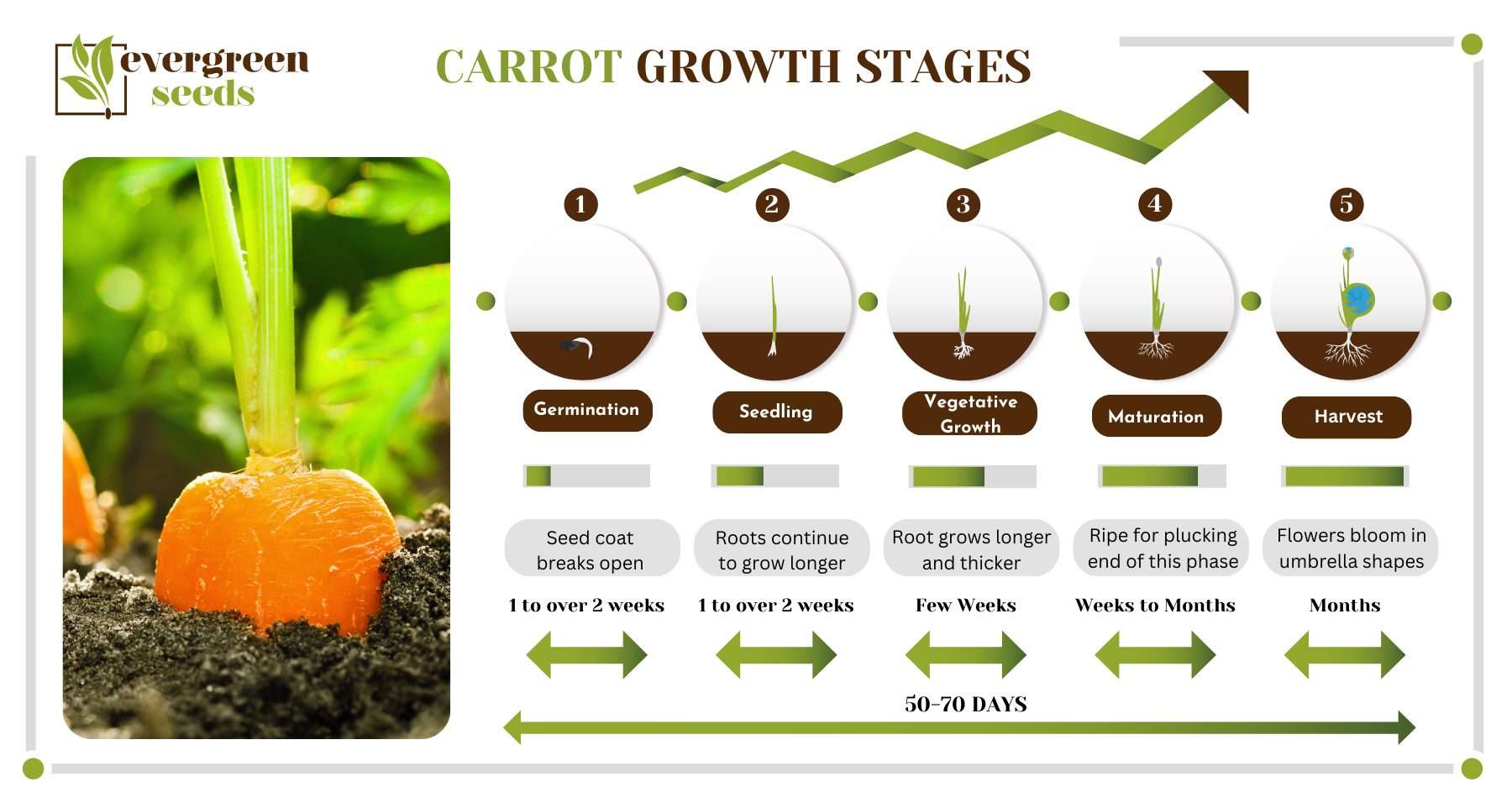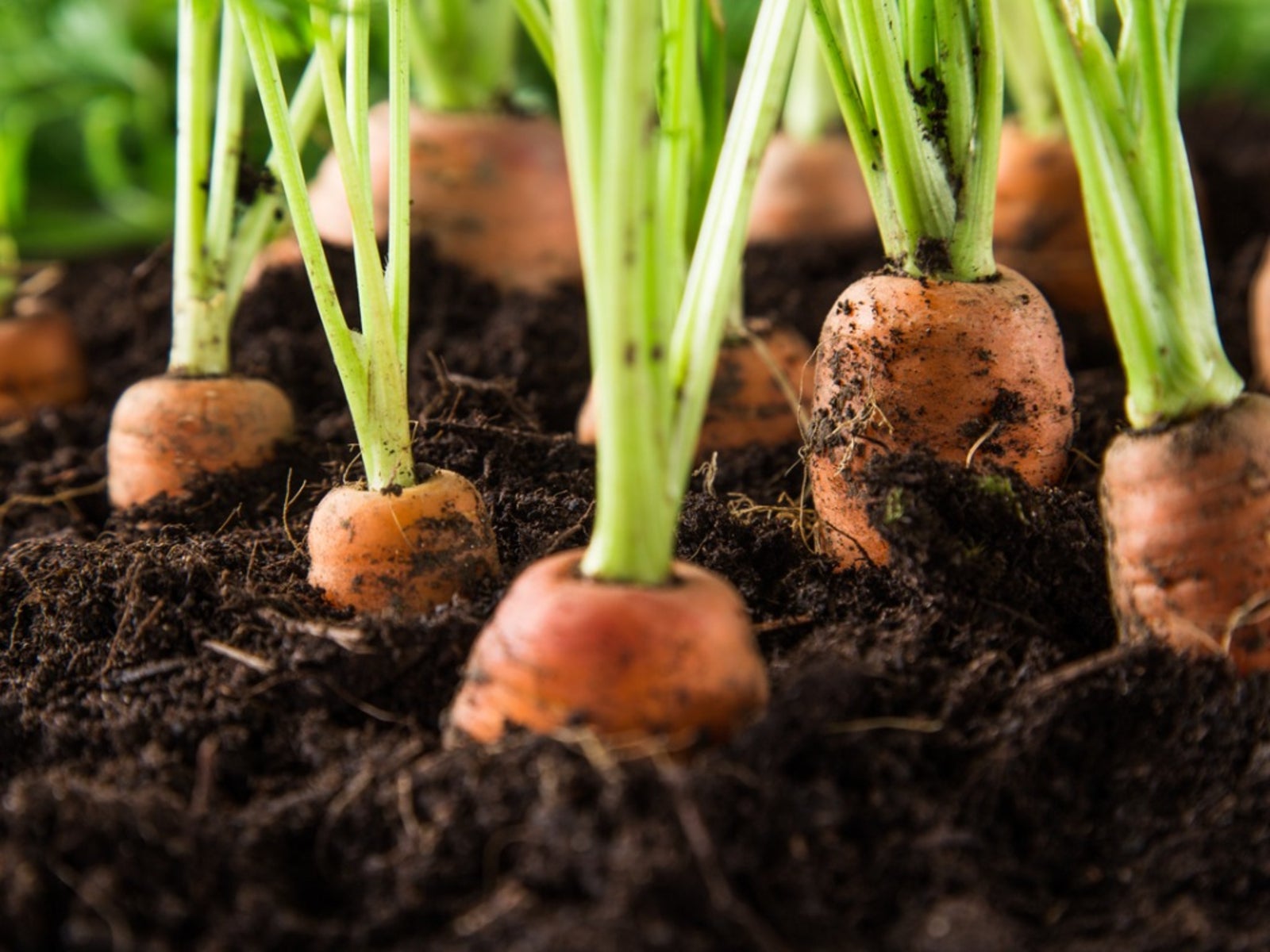Choosing the Right Variety: Selecting the Perfect Carrot for Your Garden
When it comes to growing carrots, selecting the right variety is a crucial step in the process of how to grow carrots step by step. With over 400 varieties to choose from, it can be overwhelming for beginners. However, by understanding the characteristics of different carrot varieties, you can make an informed decision and set yourself up for success. Nantes, Imperator, and Danver are three popular varieties that cater to different growing conditions and preferences. Nantes carrots are sweet and cylindrical, ideal for shallow soil and early harvests. Imperator carrots are long and slender, perfect for deep soil and maincrop harvests. Danver carrots are stout and tapered, suitable for heavy soil and storage. To choose the perfect variety for your garden, consider your climate, soil type, and desired harvest time. For instance, if you live in an area with cool summers, you may want to opt for a variety that matures quickly, such as Nantes. By selecting the right variety, you’ll be one step closer to growing delicious, crunchy carrots. Remember, the key to successful carrot cultivation lies in understanding the specific needs of your chosen variety and adapting your growing strategy accordingly.
Preparing the Soil: Creating an Ideal Environment for Carrot Growth
Before sowing carrot seeds, it’s essential to prepare the soil to create an ideal environment for growth. This crucial step in the process of how to grow carrots step by step can make all the difference in the success of your harvest. Removing rocks and debris is vital, as they can impede root growth and cause carrots to become misshapen. Loosening the soil to a depth of 12 inches will allow roots to grow freely and access essential nutrients. Adding organic matter, such as compost or well-rotted manure, will improve drainage and fertility, providing carrots with the necessary nutrients for healthy growth. A well-prepared soil will also help to prevent common problems, such as forked or deformed roots, and promote a bountiful harvest. By taking the time to prepare the soil, you’ll be setting yourself up for success and ensuring a healthy start for your carrot crop.
Sowing Seeds: The Art of Planting Carrots for Optimal Germination
When it comes to sowing carrot seeds, precision is key. This crucial step in the process of how to grow carrots step by step requires attention to detail to ensure optimal germination. To begin, prepare the soil by loosening it to a depth of 12 inches and creating a smooth, even surface. Sow seeds thinly and evenly, about ¼ inch deep, in rows that are 1-2 inches apart. For successful germination, the soil temperature should be between 40°F and 75°F (4°C and 24°C). Water the soil gently but thoroughly after sowing, and keep the soil consistently moist during the germination period. To prevent overcrowding, thin seedlings to 1-2 inches apart as soon as they emerge. This will give the remaining carrots room to grow and develop properly. By following these steps, you’ll be well on your way to growing a bountiful crop of delicious, crunchy carrots.
Watering and Thinning: The Key to Healthy Carrot Development
Once carrot seeds have germinated, it’s essential to provide consistent moisture and proper thinning techniques to promote healthy growth. This critical step in the process of how to grow carrots step by step requires attention to detail to prevent overcrowding and ensure optimal development. Water the soil gently but thoroughly, keeping the top 2-3 inches of soil consistently moist. Avoid overwatering, which can lead to rot and other diseases. As seedlings emerge, thin them to 1-2 inches apart to prevent competition for resources. Use scissors to carefully cut off weaker seedlings at soil level, leaving the strongest ones to grow. This will give the remaining carrots room to develop properly, resulting in a bountiful harvest of crunchy, delicious carrots. By following these simple steps, you’ll be well on your way to growing a healthy crop of carrots.
Managing Pests and Diseases: Common Issues and Organic Solutions
As carrots grow, they can be susceptible to various pests and diseases that can hinder their development. To ensure a healthy crop, it’s essential to be aware of these common issues and take organic measures to control them. One of the most common pests that affect carrots is the carrot rust fly, which can cause damage to the roots and leaves. To prevent infestations, use row covers to keep the flies away, and introduce natural predators like parasitic wasps to control their populations. Another common issue is powdery mildew, a fungal disease that can cause white, powdery patches to form on the leaves. To prevent this disease, ensure good air circulation, water plants at the base rather than from above, and use organic fungicides like neem oil. By being proactive and taking these organic measures, you can minimize the risk of pests and diseases and enjoy a bountiful harvest of delicious, crunchy carrots when following the steps of how to grow carrots step by step.
Supporting Growth: Using Mulch and Companion Planting to Boost Yields
As carrots grow, they require a supportive environment to reach their full potential. Two techniques that can significantly boost yields are mulching and companion planting. Mulching helps to retain moisture, suppress weeds, and regulate soil temperature, creating an ideal environment for carrot growth. Apply a 2-3 inch layer of organic mulch, such as straw or wood chips, around the carrot bed, keeping it a few inches away from the plants. Companion planting, on the other hand, involves growing other plants alongside carrots to improve their growth and health. Planting onions, sage, or rosemary near carrots can help to repel pests and improve soil health. By incorporating these techniques into the process of how to grow carrots step by step, you can create a thriving and productive carrot garden. Additionally, consider planting marigolds or nasturtiums, which can help to deter nematodes and other pests that can harm carrots. By using these innovative techniques, you can enjoy a bountiful harvest of delicious, crunchy carrots.
Harvesting at the Right Time: Tips for Picking Perfect Carrots
Harvesting carrots at the right time is crucial to ensure they are sweet, crunchy, and flavorful. To determine when carrots are ready to harvest, check for size, color, and texture. For most varieties, carrots are ready to harvest when they are between 1/2 to 1 inch in diameter. Gently dig around the carrot with a fork, being careful not to damage the roots. Lift the carrot out of the soil, and inspect its color and texture. Carrots should be firm, smooth, and brightly colored. If you’re following the steps of how to grow carrots step by step, you’ll want to harvest your carrots when they’re at their peak flavor and texture. For a continuous harvest, sow carrot seeds every 2-3 weeks, and harvest them when they’re mature. By mastering the art of harvesting, you’ll be able to enjoy a bountiful crop of delicious, homegrown carrots all season long.
Troubleshooting Common Issues: Overcoming Obstacles in Carrot Growing
Despite following the steps of how to grow carrots step by step, common issues may still arise during carrot cultivation. One of the most common problems is forked or deformed roots, which can be caused by rocky or compacted soil, inadequate moisture, or poor soil preparation. To overcome this challenge, ensure that the soil is well-draining and loose, and provide consistent moisture throughout the growing season. Another common issue is pest damage, such as carrot rust flies or rabbits. To control these pests, use organic solutions like row covers, neem oil, or predator insects. Additionally, carrots may be affected by diseases like powdery mildew or root rot. To prevent these diseases, maintain good air circulation, remove infected plants, and practice crop rotation. By being aware of these common issues and taking proactive steps to overcome them, you can ensure a successful and productive carrot harvest.








